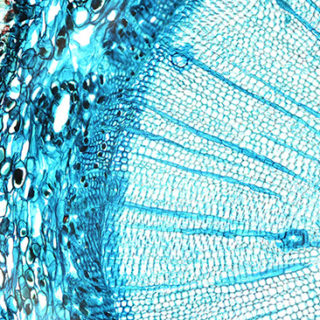Hunting for the gold of the forest
Researchers at Lund University want to increase the value of our forests by finding new, more valuable areas of application for the substance of lignin.
The forestry industry is facing major challenges as the raw materials of the forest are less and less in demand within parts of the traditional paper industry. This is a consequence of our increasingly digitalised society. We must therefore find new areas of application and develop new processes for the raw materials of the forest in order to increase the value of our forested land.
THE LIGNIN RESEARCH PROJECT involves a group of researchers developing processes for new applications of the forestry product lignin.
“The aim of the project is to create a platform for research and use of the forestry raw material of lignin in order to extract more valuable products from forestry in the future, which would allow us to increase the value of forested land”, says research leader Marie Gorwa-Grauslund.
The project involves researchers developing catalytical methods for the decomposition of lignin, analysing structures and converting lignin into other chemicals, using new microorganisms and processes.
“Lignin is a complex material based on a number of familiar chemical building blocks which combine in partly random processes to form a large polymer. It is a major challenge to understand and break down the structures into usable building blocks. The structures are a little like a black box”, explains Marie Gorwa-Grauslund.
This is a high-risk project but the researchers are convinced that its five-year perspective will allow them to identify new areas of application for our forestry industry and, hopefully, new environmentally friendly and valuable chemicals derived from the raw material lignin.
Text: Cecilia von Arnold
Facts
-
The Lignin project
-
Read more the participants in the Lignin project on their wesite.
-
Lignin
-
Lignin is a heterogeneous polymer which makes up a large proportion of (non-marine) biomass. Simply put, the task of lignin can be seen as protecting the tree and holding its structure together – a little like glue.
Around 15 to 30 per cent of waste products from agriculture and forestry consist of lignin – in particular, coniferous trees contain a high proportion of lignin. There are therefore potentially major assets and opportunities to use lignin as a renewable raw material in various processes.
However, lignin is a raw material that is more difficult to break down than cellulose or hemicellulose – the other primary components of biomass. Lignin is therefore mainly used today as fuel in the self-reliant energy supply of the pulp mills themselves, but certain types of lignin, known as lignosulfonates, can be used as a viscosity regulator in cement and concrete.
There are many other potential future applications for lignin – both in direct polymer form – or in converted form – such as liquid aeroplane fuel, bioplastics, or refined chemicals for drug production.
-
Polymers
-
Polymers consist of chain-shaped molecules which are in turn composed of many smaller molecules. The word polymer means ‘consisting of several parts’. Examples of organic natural polymers (biopolymers) are starch, cellulose, lignin and proteins.
-
Research at Lund University on Circular bio-based economy
-
Forskning kring plast för ett hållbart samhälle – MISTRA: (in Swedish)
Samarbeten för nya biobaserade produkter och processer – LUBIRC: (in Swedish)





